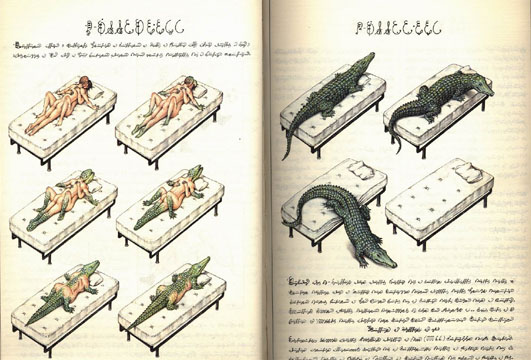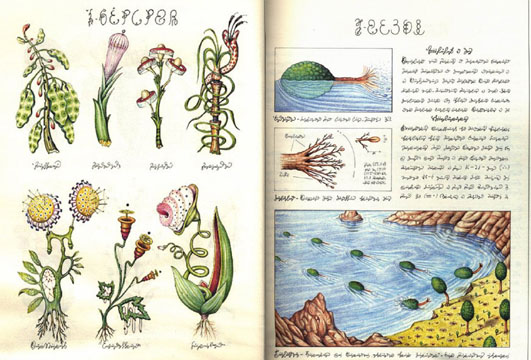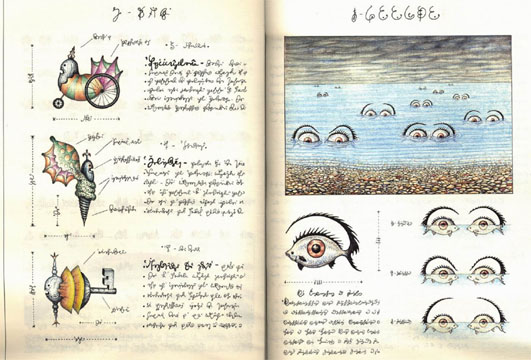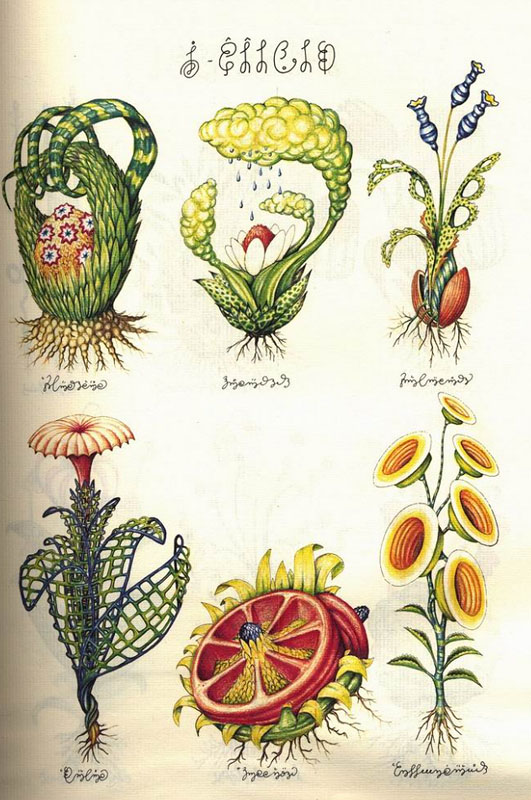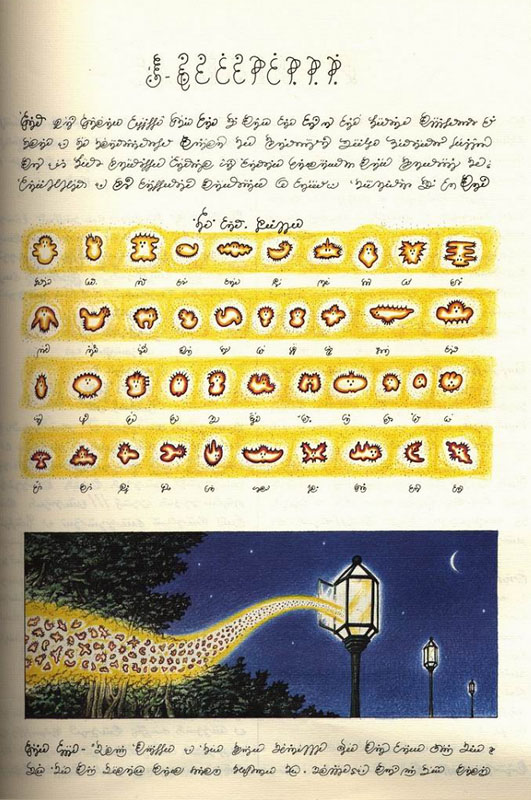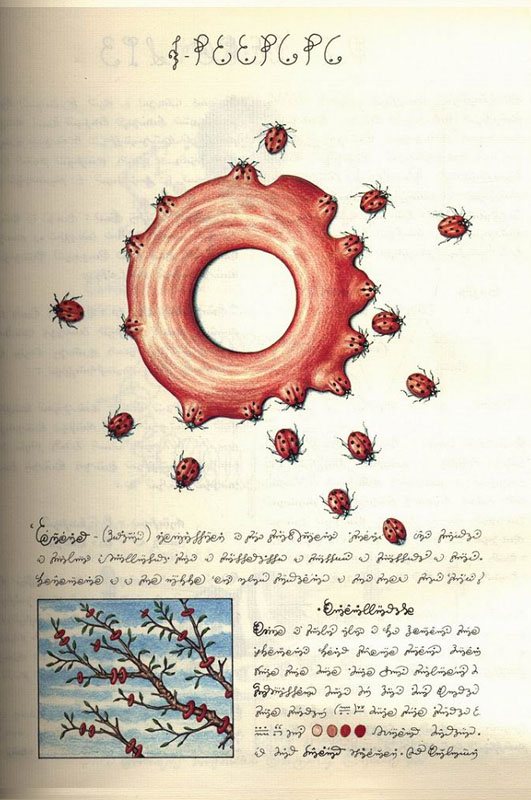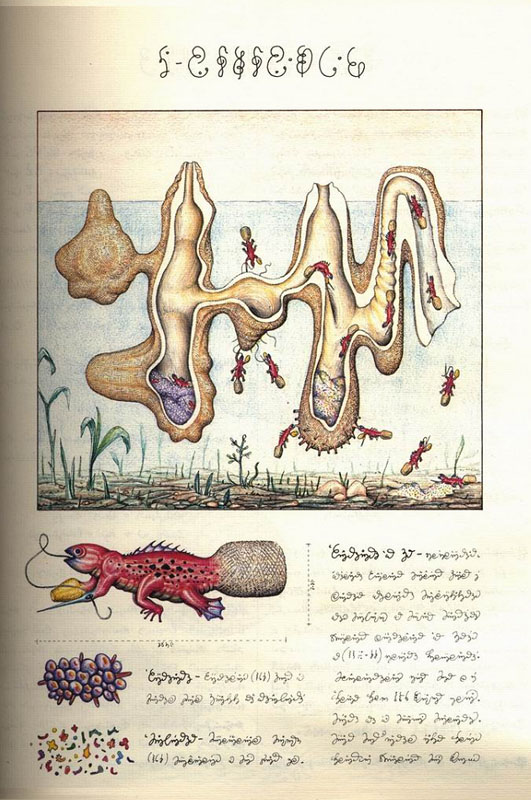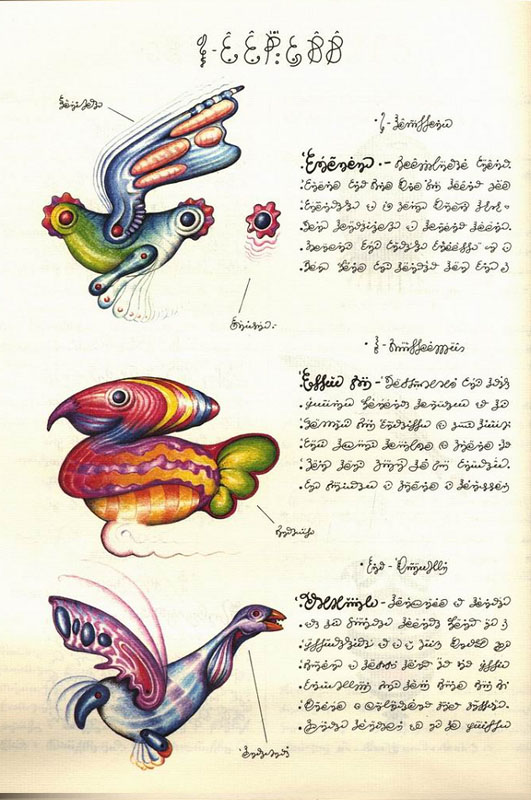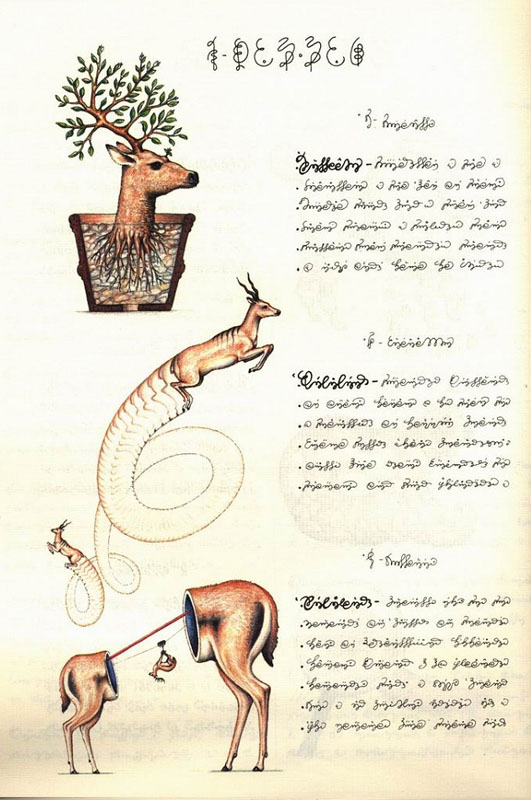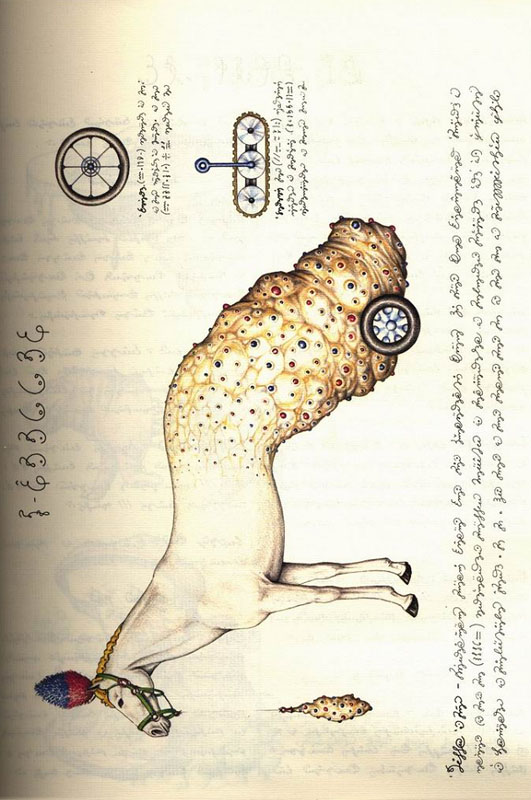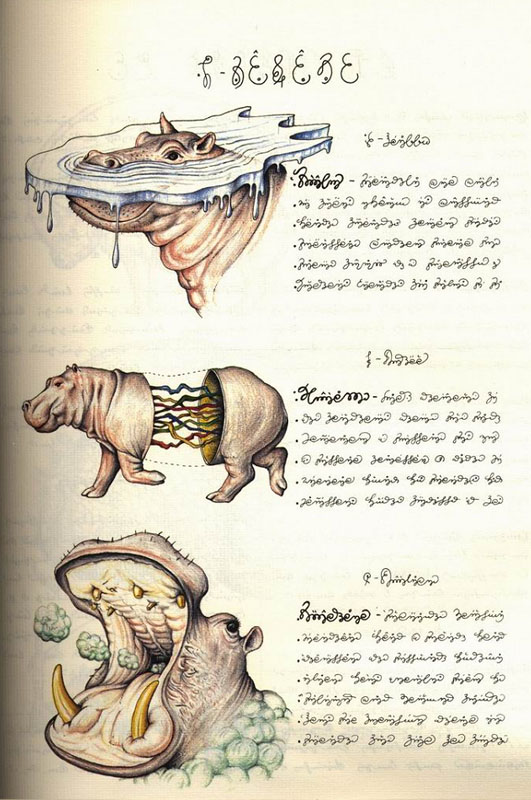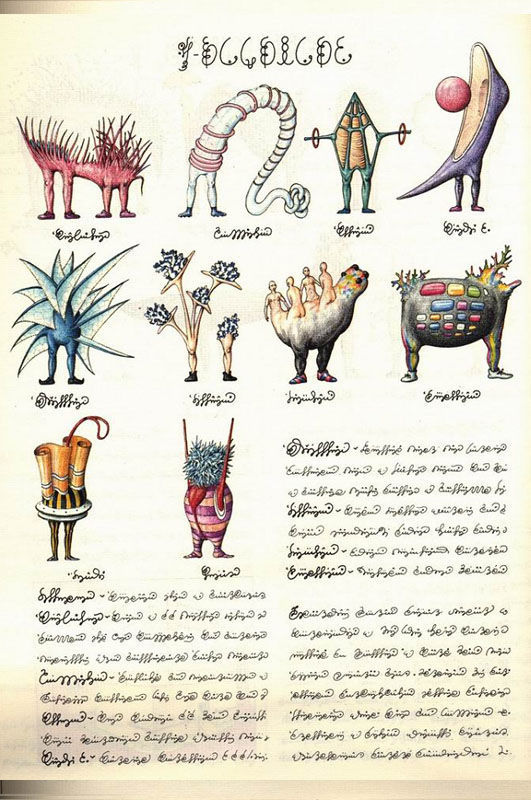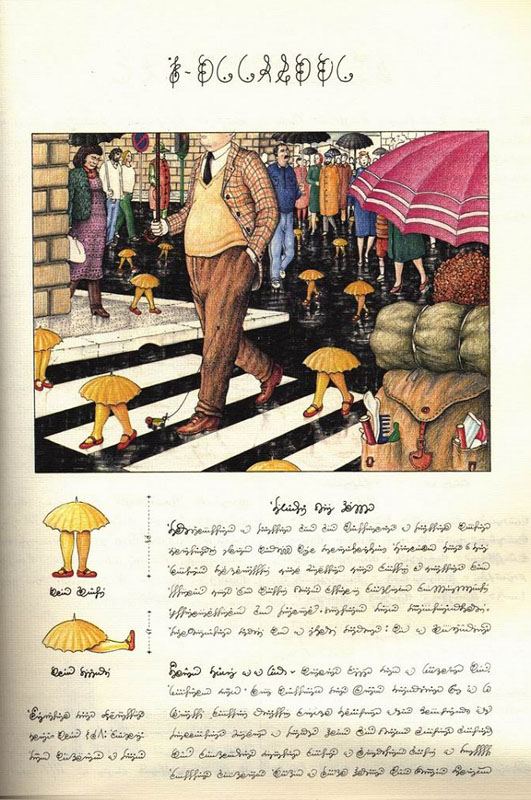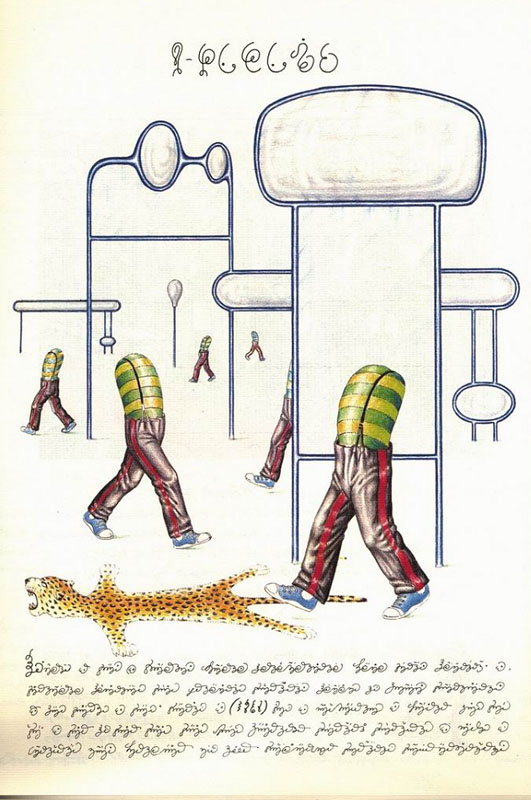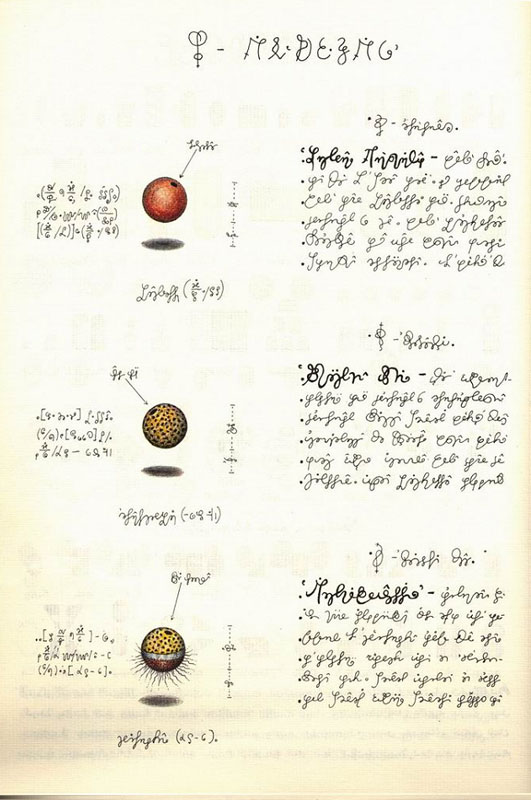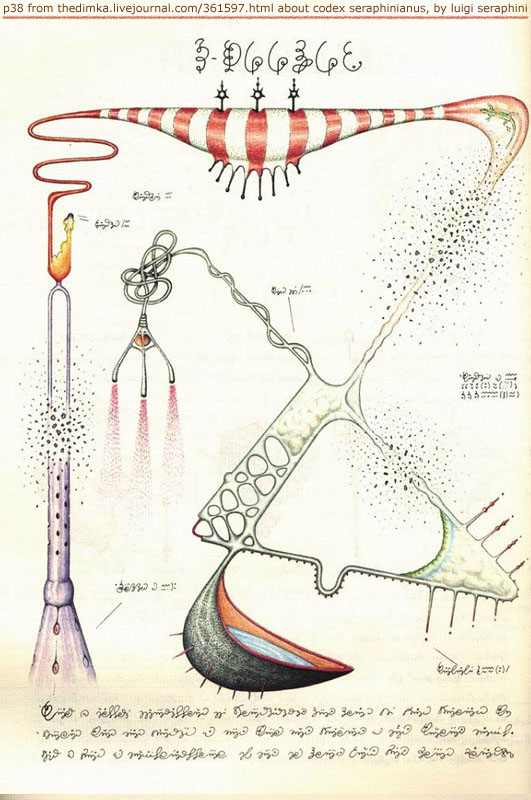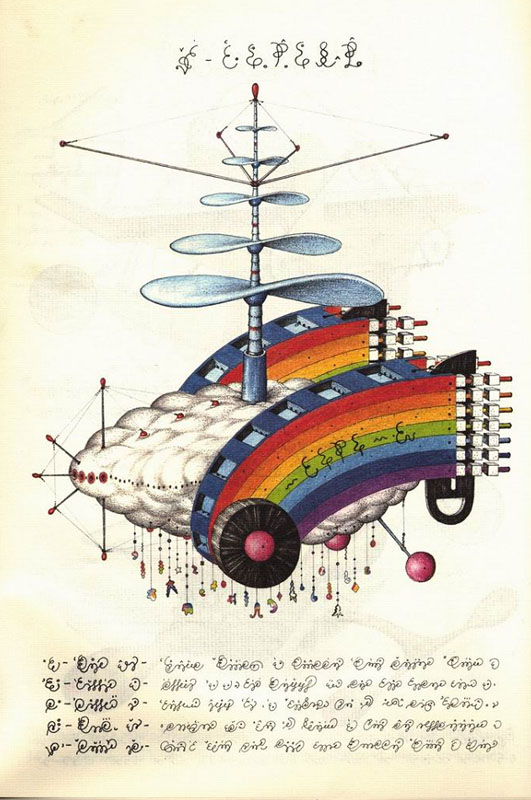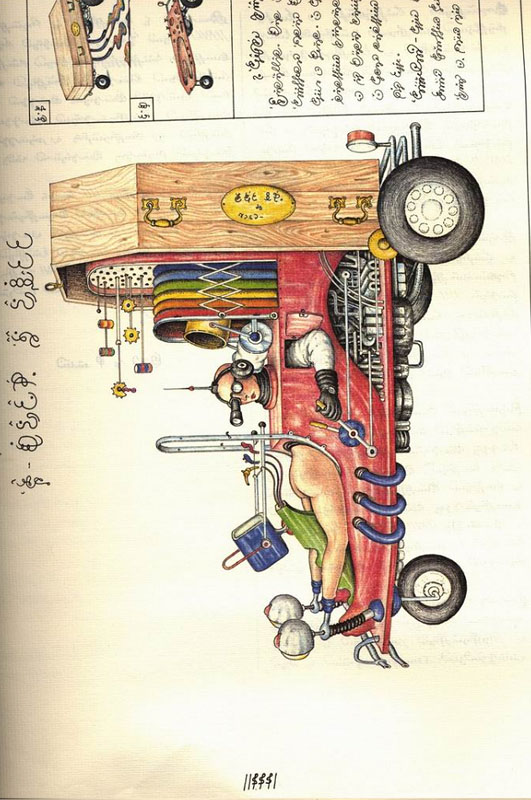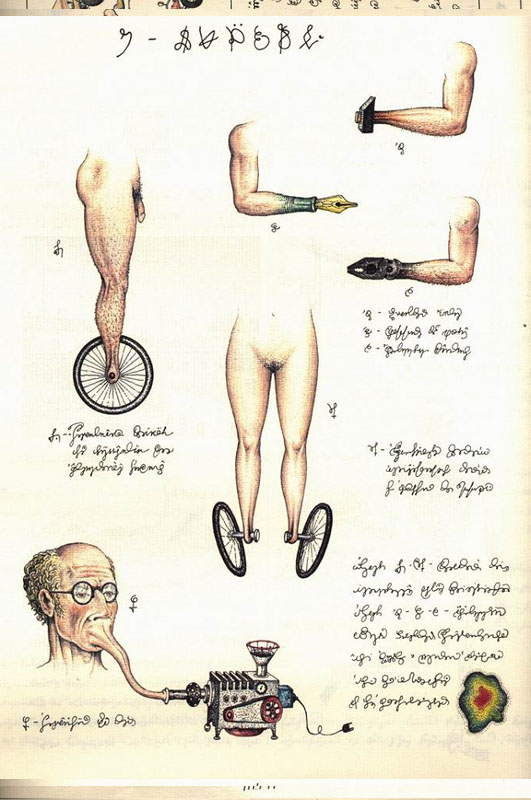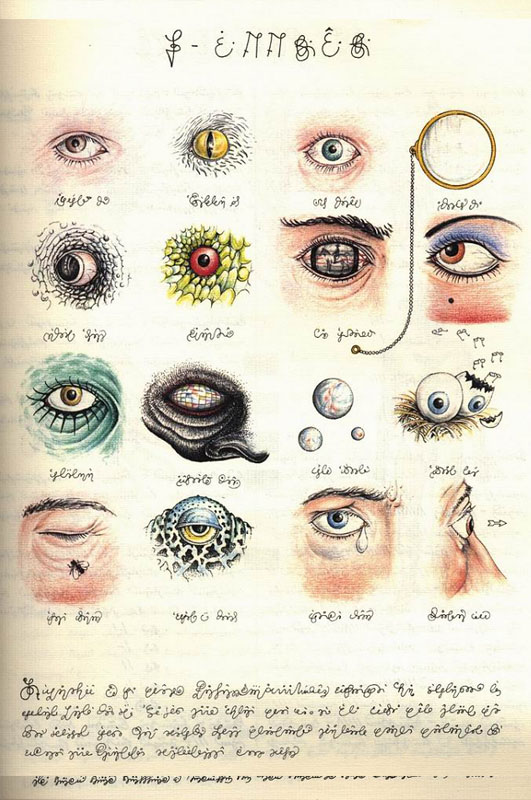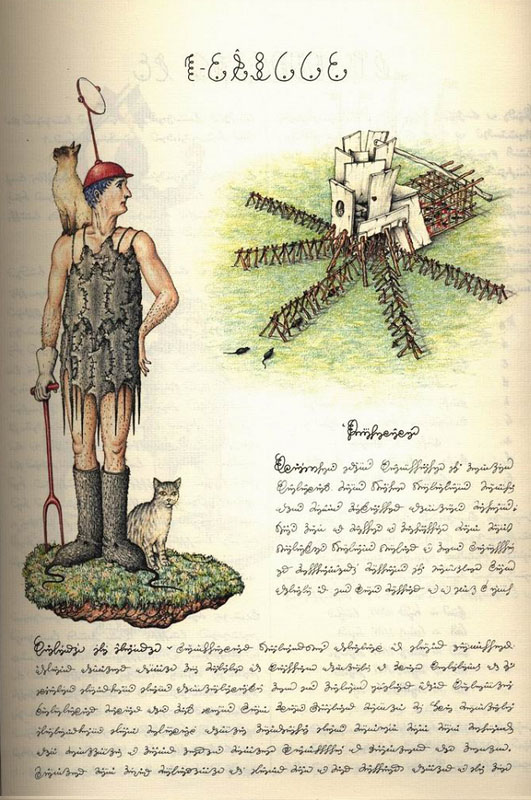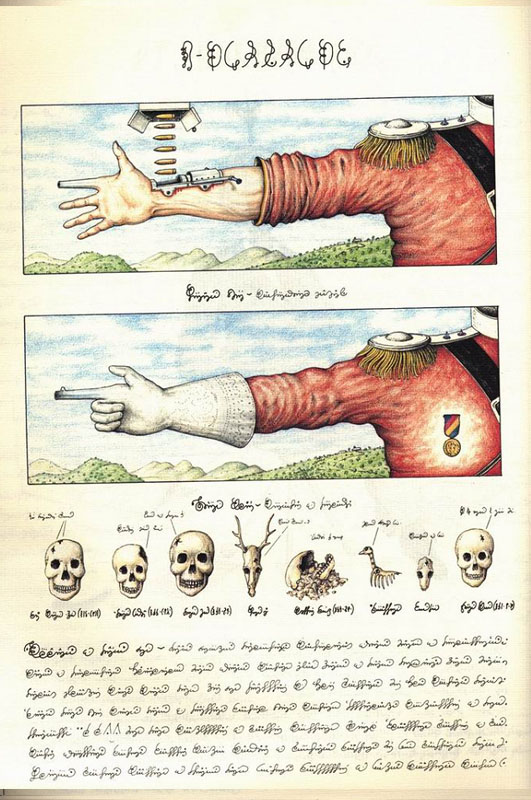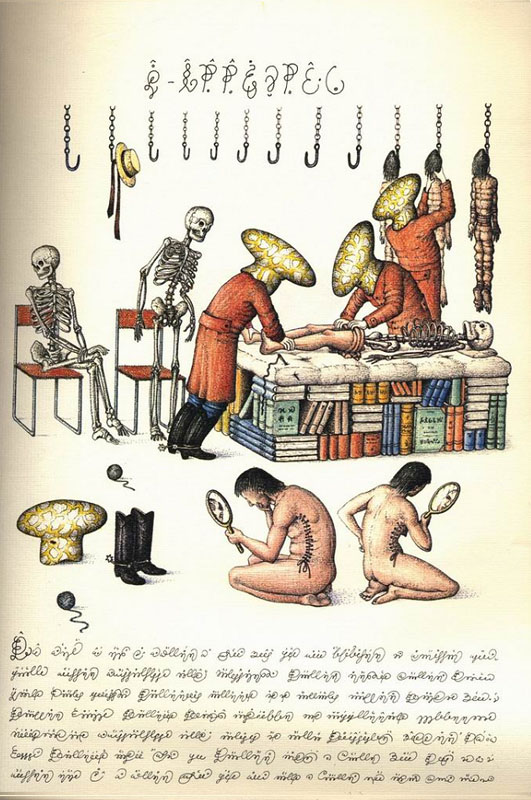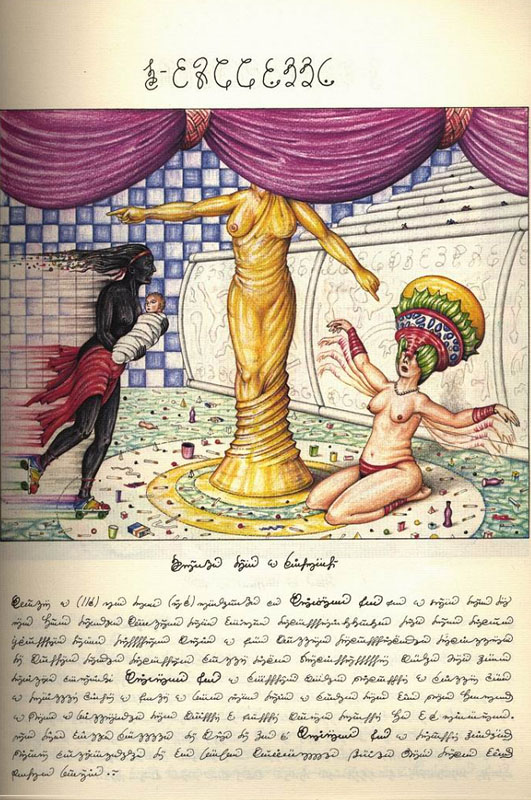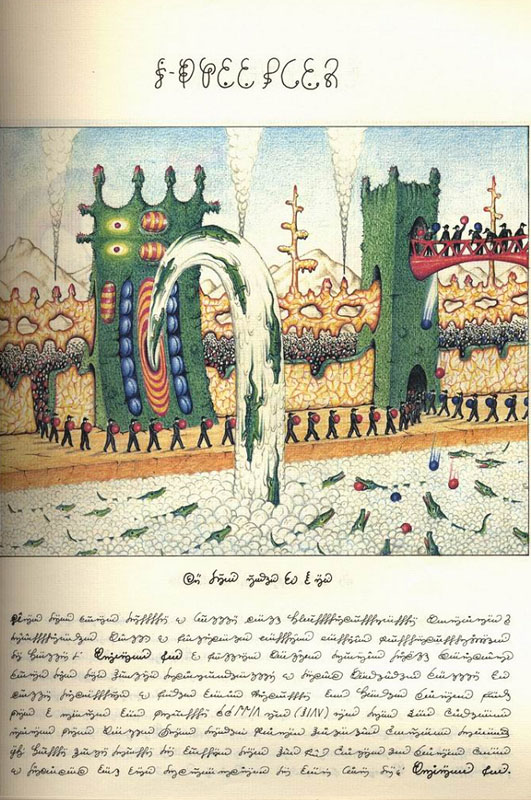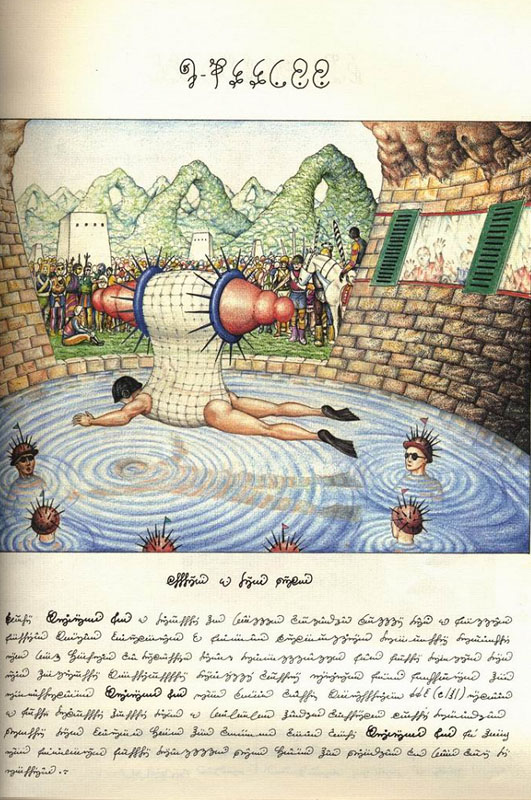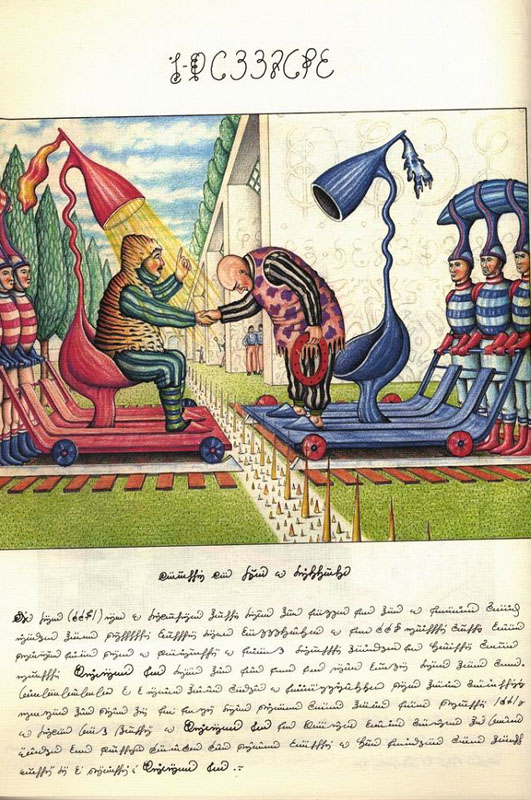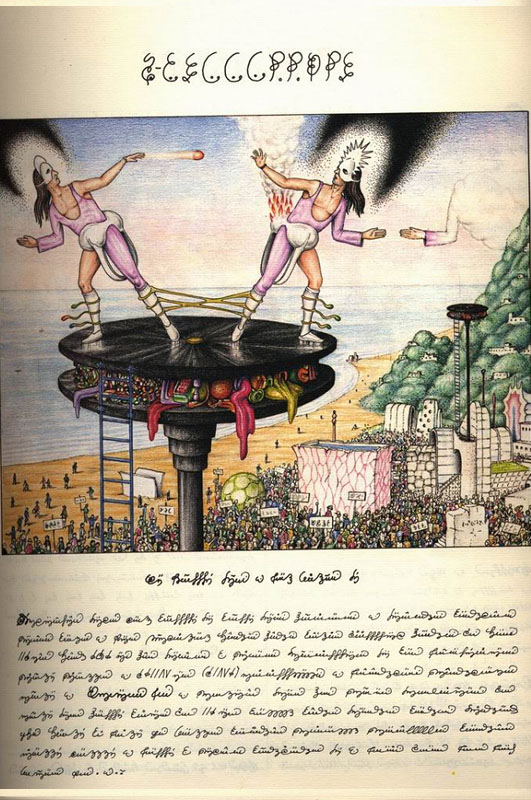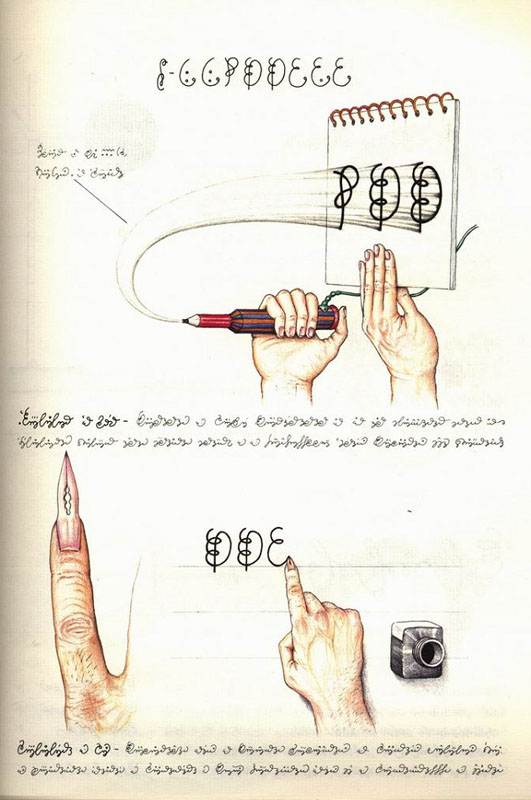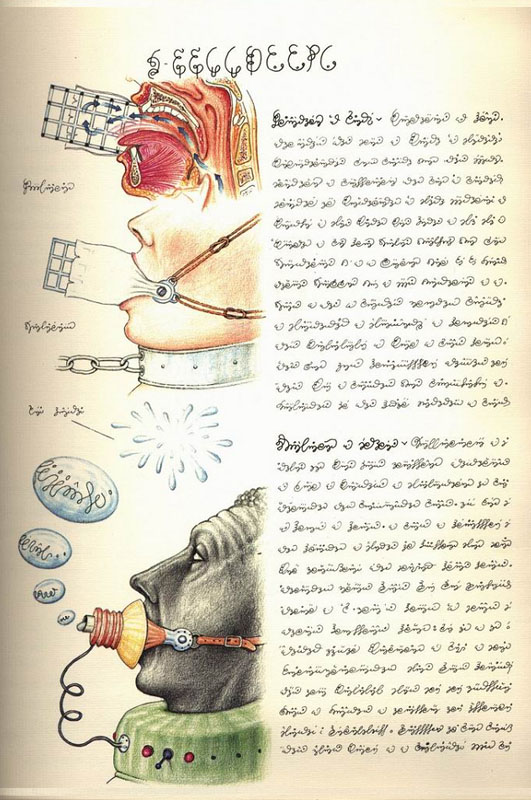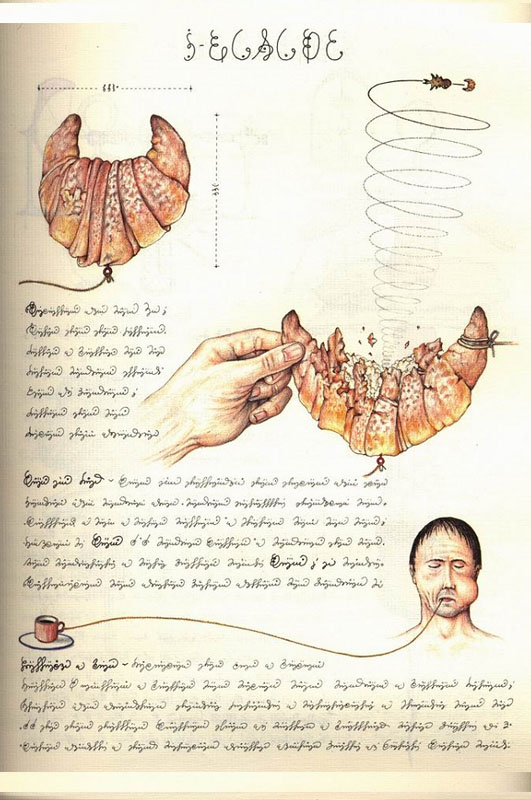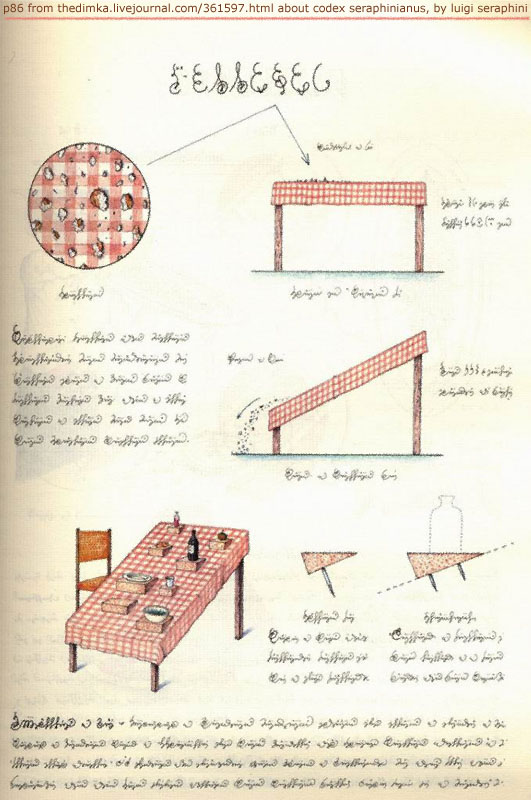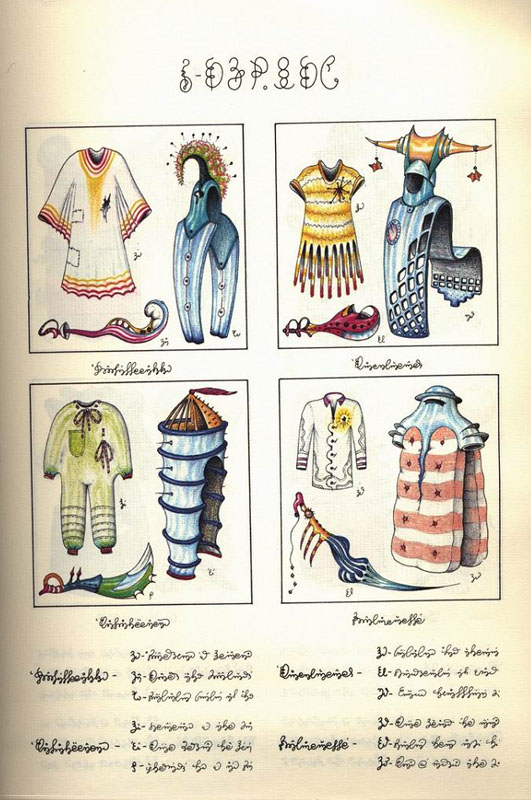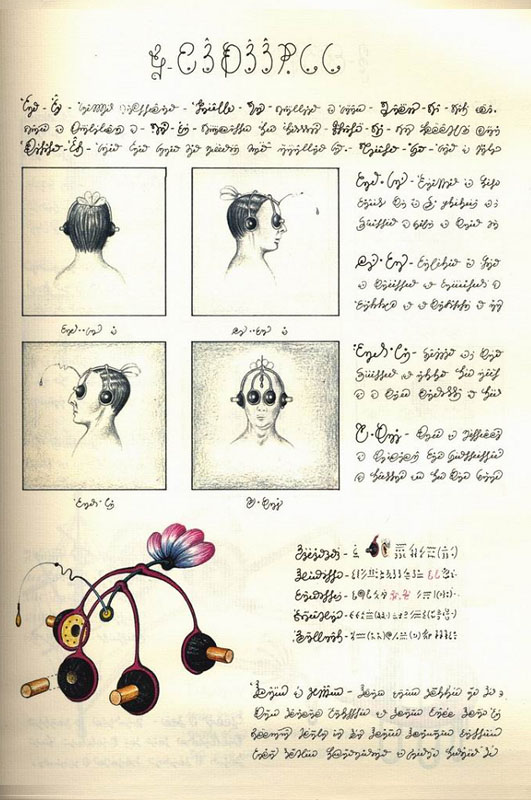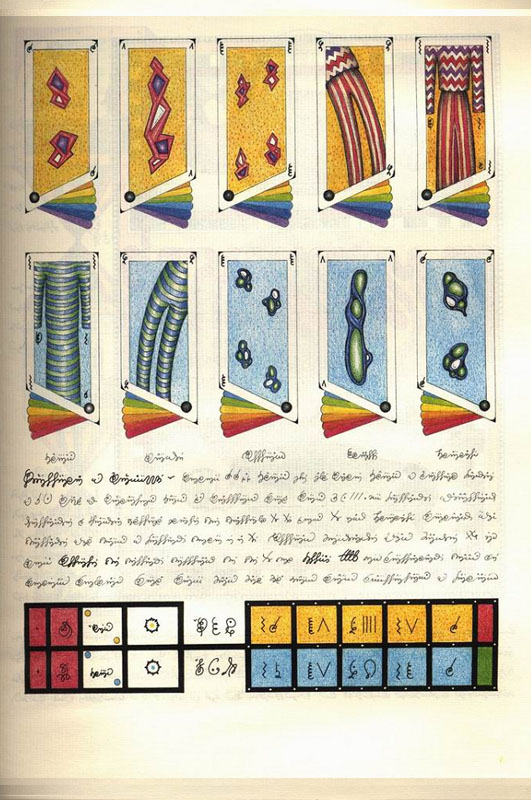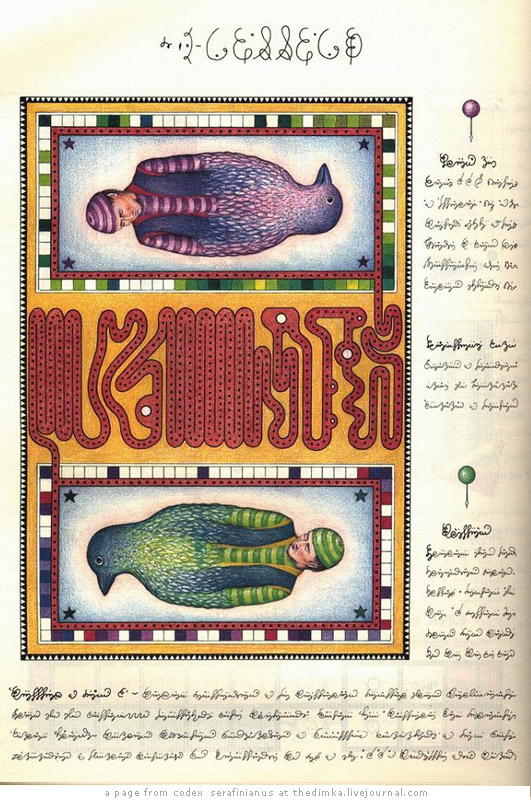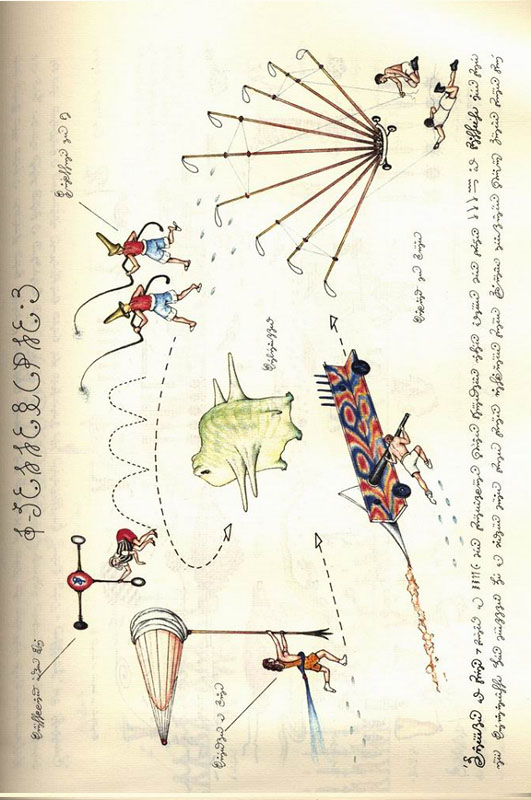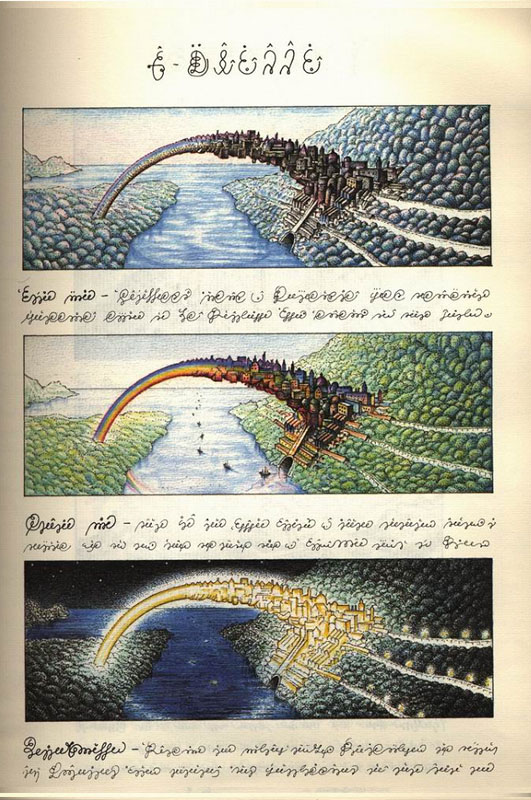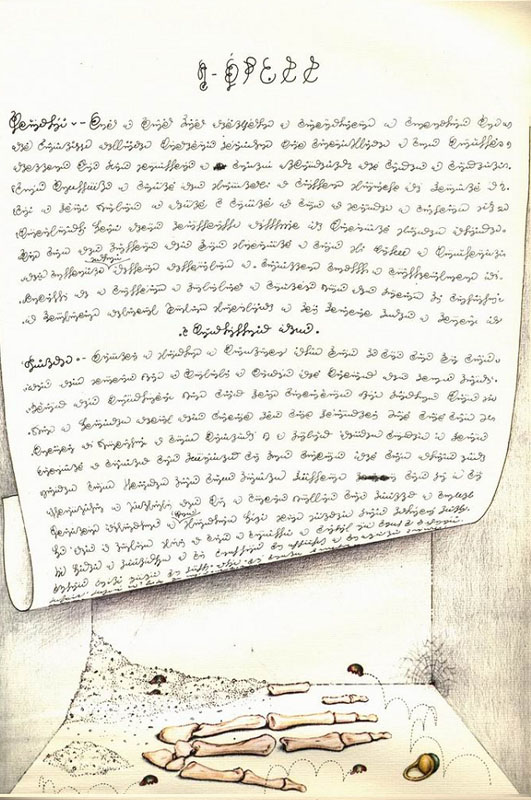In 1981 Italian artist, architect and industrial designer Luigi Serafini published the weirdest book in history: Codex Seraphinianus. Filled with weird psychedelic illustrations, the book was written in a language that both doesn’t exist and can’t be deciphered (maybe it’s just random gibberish).
The book features many illustrations designed in such a way that it seems they were made by some scientist studying extraterrestrial beings in nature. In this psychedelic encyclopedia one can find hand-drawn colored-pencil illustrations of bizarre and fantastical flora, fauna, anatomies, fashions, and foods. Surrealist scenes include bleeding fruit, a plant that grows into roughly the shape of a chair and is subsequently made into one, and a lovemaking couple that metamorphoses into an alligator.

The word “Codex” in the title means “book” (from Latin “caudex”), and “Seraphinianus” is derived from the author’s last name, Serafini (which in Italian, refers to the seraphs). Literally, Codex Seraphinianus means Serafini’s book. The title is indeed fitting since the book, which sells for as much as $500 on Amazon, is a veritable trip inside the artist’s mind.
The strange and generally unintelligible alphabet littered throughout the 360–page book has given even reputed linguists headaches. Some letters appear only at the beginning or at the end of words — a feature shared with Semitic writing systems. The curvilinear letters of the alphabet are rope- or thread-like, displaying loops and even knots, and are somewhat reminiscent of Sinhala alphabets. The number system used for numbering the pages, however, has been cracked (apparently independently) by Allan C. Wechsler and Bulgarian linguist Ivan Derzhanski, among others. It is a variation of base 21.
The alphabet used in the body text, however, may be completely fake and … senseless. In a talk at the Oxford University Society of Bibliophiles held on 11 May 2009, Serafini stated that there is no meaning hidden behind the script of the Codex, which is asemic. His own experience in writing it was closely similar to automatic writing; and that what he wanted his alphabet to convey to the reader is the sensation that children feel in front of books they cannot yet understand but know make sense for grown-ups.
It took Serafini 30 months to complete Codex Seraphinianus, which is divided into 11 chapters and two parts – the first about nature and the second about people. Here are some scanned pages from the book, courtesy of the-dimka.